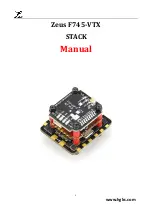
Planning a OpenScape Cordless IP System
c03.fm
General
A31003-C1020-S100-03-7620, 12/2017
34
OpenScape Cordless IP V2, Service Documentation
3.2 General
DECT IP Base station (BSIP2)
DECT IP base stations are logically connected to the DECT Manager software
over LAN connections. This software is connected to the communication server
via the SIP interface.
•
Base station range
–
Ethernet cable range (see also Chapter 2.4 for network requirements
between DECT IP base stations and the DECT Manager software)
–
Spatial distance
The distance which must be maintained between the different installation
points of the base stations is dependent on
–
the range
–
the traffic capacity of the radio cells.
You can increase the number of simultaneous calls in a radio cell by
overlapping radio cells (overload).
–
Distance
For synchronization over DECT, the DECT IP base stations you want
to synchronize with each other must be able to exchange their
management information (beacons). For this to work, they must be
located in the areas where their radio cells overlap.
This does not apply for use of over-the-air synchronization.
–
Overlap areas inside/outside buildings (see following chapter),
measurement results (RSSI points).
Radio measurement techniques are used to determine the radio range of DECT
IP base stations.
DECT IP base stations inside buildings
–
Please note that the base station’s connection cable can be repositioned
as necessary (connection cable plus reserve loop to be factored in).
DECT IP base stations in areas outside buildings (e.g. campuses).
–
The base station must be installed in the outdoor case for use is exterior
areas.
–
Make sure that adequate lightning and overvoltage protection is provided
for the cable feeder into the building and the DECT IP base station
•
Radio propagation
Radio propagation is negatively influenced by
















































